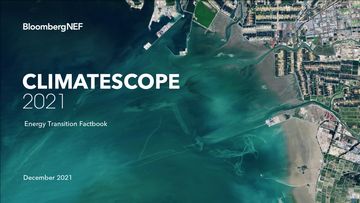Peru
With a cumulative score of 1.66, Peru ranks number 34 among emerging markets and number 63 in the global ranking.
- Emerging markets
- Americas
2.02 / 5
Power score
0.82 / 5
Transport score
Buildings score
Only 56 markets (28 emerging markets) are scored on the Buildings sector. See the full list on the methodology page.
Low-carbon strategy
Net-zero goal and strategy
Peru has set neither a net-zero emissions goal nor a long-term carbon strategy.
Nationally Determined Contributions (NDC)
Peru has submitted a NDC with a BAU target which covers all sectors.
Fossil fuel phase-out policy
There is no fossil fuel phase-out policy in Peru.
Power
Power policy
Technology-specific auctions have been essential for renewables deployment in Peru. In 2008, under Decree No. 1002, the government established auctions to contract on-grid renewable capacity every two years. Since then, four auctions have been held, resulting in 71 project developments totaling 1.34 gigawatts of biomass, small hydro, solar and wind. But this program has been suspended. Peru offers priority dispatch to clean energy plants and 20% accelerated depreciation for renewables projects.
Peru held an auction for off-grid solar in November 2014 to contract as much as 500,000 off-grid PV systems. Ergon, the only winner, said it will develop 150,000 to 200,000 systems by 2034, when the investment contract expires. As of July 2019, Ergon had commissioned almost 134,000 systems. Peru was among the first countries to hold off-grid energy auctions.
The Ministry of Energy and Mines published in 2015 Decree 1221, aiming to improve the regulation of electricity distribution and promote access to electricity in Peru. However, it took until 2018 for the Decreto Supremo del Reglamento de la Generacion Distribuida to be published for public comments. It proposes a net-billing scheme for installations with up to 200 kilowatts of power, but also a scheme for projects up to 10 MW.
Power policies
Power prices and costs
Power prices in Peru have risen considerably over the past years. Industrial electricity was the most inflationary, increasing 16%, from $79.71/MWh in 2016 to $93 in 2020. In the same period, commercial rates rose from $106.40 to $121.23 and residential from $137.57 to $155.94. Even so, Peru’s electricity prices rank among the cheapest in Latin America.
Power market
Peru attracted $615.10 million in clean energy investment at 2020. Most went to small hydro and onshore wind projects, which garnered 35% and 22% of the total, respectively. However, from 2016 to 2019, solar attracted most investment, registering $252 million in the period, compared with $165 million in wind.
Peru saw a peak in investment through 2012-2014, mostly led by financing of auction projects. In recent years, clean energy investment in the country has faded, dropping to $300 million in 2017 and less than $2 million in 2018. The country has received capital from international and national commercial financial institutions, as well as development banks. The biggest lead arrangers are U.S. Overseas Private Investment Corp. (OPIC) and the European Investment Bank, registering $235 million and $213 million on PV and onshore wind, respectively.
Installed Capacity (in MW)
Electricity Generation (in GWh)
Utility privatisation
Which segments of the power sector are open to private participation?
Wholesale power market
Does the country have a wholesale power market?
Doing business and barriers
The Ministry for Energy and Mines (Minem) is responsible for evaluating the need for auctions, and Organismo Supervisor de la Inversion en Energia y Mineria (Osinergim), the power sector regulator, conducts the tenders. A renewable auction expected to be held in 2018 was canceled in April 2017, and no new tender has been announced. Minem’s said the cancelation is because not all projects selected in the previous auction are being developed.
Peru’s energy consumption has been stable, averaging a 1% increase in demand over the past two years. There are indications the country is oversupplied with power assets, which would be the main explanation for the hiatus in renewable auctions.
Aside from accelerated depreciation, Peru offers no tax incentives for clean energy, charging 18% of import taxes for common renewable equipment such as wind turbines and PV panels, and it collects a value added tax averaging 16%.
Currency of PPAs
Are PPAs signed in or indexed to U.S. Dollars or Euro?
Bilateral power contracts
Can a C&I (Commercial and Industrial) customer sign a long-term contract (PPA) for clean energy?
Bilateral power contracts
Can a C&I (Commercial and Industrial) customer sign a long-term contract (PPA) for clean energy?
Bilateral power contracts
Can a C&I (Commercial and Industrial) customer sign a long-term contract (PPA) for clean energy?
Fossil fuel subsidies
Does the government influence the wholesale price of fossil fuel (used by thermal power plants) down through subsidies?
Fossil fuel taxes
Does the government influence the wholesale price of fossil fuel (used by thermal power plants) up through taxes?
Transport
EV market
The government has yet to implement any substantive policy support in this sector and the EV market remains at an early stage.
EV policy
The government has yet to implement any substantive policy support in this sector and the EV market remains at an early stage.
Transport policies
Fuel economy standards
Does the country have a fuel economy standard in place?
Buildings
Buildings market
The government has yet to implement any substantive policy support in this sector and the EV market remains at an early stage.
Energy performance standards
Are there minimum energy performance standards for buildings?
Energy efficiency plan
Does the country have a national energy efficiency plan?
Buildings policy
The government has yet to implement any substantive policy support in this sector and the low-carbon heat market remains at an early stage.

